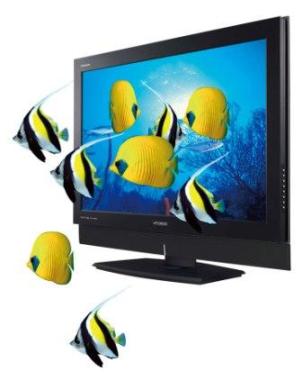SMPTE Moves on 3D
LOS ANGELES
A major milestone toward making 3D Home Theater delivery a reality was reached in April when the Society of Motion Picture and Television Engineers announced the requirements for a stereoscopic 3D Home Master standard in its “Report of SMPTE Task Force on 3D To The Home.”

Focusing on post production 3D mastering rather than the various delivery options to a home screen, the report is a summary of the questions that need to be asked but not yet a compilation of answers. That will come as a new SMPTE standards committee starts to formulate final specifications beginning this month.
Instead, the April 22 report provides a list of requirements to move the process toward a post production 3D Master for home delivery.
RESOLUTION ISSUES
According to Wendy Aylsworth, elected engineering vice president of SMPTE who oversees all their standards development and instigated this committee, “We think 3D will be enjoyed in the home and wanted to set the requirements that will make that possible. This is what we need to have in order to achieve end-to-end interoperability all the way from content creation to the eyeballs of the home viewers.”
In Section 1.2, the report specifies that the eventual image file definitions need to include video resolutions up to and including 1920×1080 and native frame rates up to and including 60p per eye view.
“You could look at the 3D Home Master as a container that holds two movies or two TV programs,” Ayls-worth said, “one for the left eye and one for the right eye. In the case of film acquisition, each ‘eye’ will likely be shot at 24 frames per second. That means each second’s worth in the container will have 24 left frames and 24 right frames [for a total of 48]. In the case of 60p HD acquisition, each ‘eye’ will be shot at 60 fps, so each second’s worth in the container will have 60 left frames and 60 right frames [for a total of 120].”
It should be noted that as opposed to the DCI (Digital Cinema Initiative) mastering specifications requiring 2K and above for theatrical exhibition, a proposed 3D Home Master would be limited to HD resolutions. However, in Section 7.1 it does require that “The 3D Home Master shall include a structure to contain metadata to identify the method, if allowed, by which a 2D version can be extracted or generated from 3D content.”
Since 2D versions are often edited differently from 3D releases and directors regularly compose their shots to accommodate the requirements of each medium, any final mastering specification will need to deal with ways this significant aesthetic differentiation can be accommodated. Can the same suit be tailored to fit two different customers?
“On the face of it, you could use either one of the ‘eyes’, and, as a result, you would get a 2D representation,” Aylsworth said. “But that representation may not be one that is artistically or creatively acceptable. Directors have already chosen to provide different editorial cuts between their 2D and 3D releases of movie titles. In CGI movies they have chosen different focal depths. Thus, the requirement stated in the 3D Task Force Report is intended to ensure that if there are better solutions than just simply using one eye, that such are considered and accommodated if at all possible.”
BEYOND THE THEATER
Whether eventual 3D home delivery is on physical disk, over the Internet, on a gaming station or via some other technology, this SMPTE report provides a major step forward. Chris Chinnock, board member of the 3D@Home Consortium said, “This report lends credibility that home 3D is being taken seriously by all players in the industry. At NAB Show 2009 we saw how active they are in the creation of 3D content. Now we need to agree on how to deliver it to the consumer.”
Panasonic has been a major advocate of its own proposed 3D mastering protocol. “The release of this report is an important first step toward creating a mastering format initially for home video where I believe there is traction, but also for all potential 3D distribution formats, including but not limited to cable, broadcast and Internet delivery,” said Eisuke Tsuyuzaki, managing director of the Panasonic Hollywood Laboratory.
But it is, of course, the mastering labs who will need to create the final deliverables for home 3D from the eventual SMPTE master specifications. “Even this year’s Cannes Film Festival opened with Disney/Pixar’s ‘Up’ in 3D,” said Peter Staddon, senior vice president, worldwide sales & marketing for Deluxe Digital Studios’ Home Entertainment Division. “Bringing that kind of experience to the home environment is becoming very important so we want to be able to do it as soon as we can. Ultimately it will be a relatively simple task for the labs to take a standardized master from the studios and spit out whatever flavor of home delivery format that is needed.”
The professional video industry's #1 source for news, trends and product and tech information. Sign up below.
